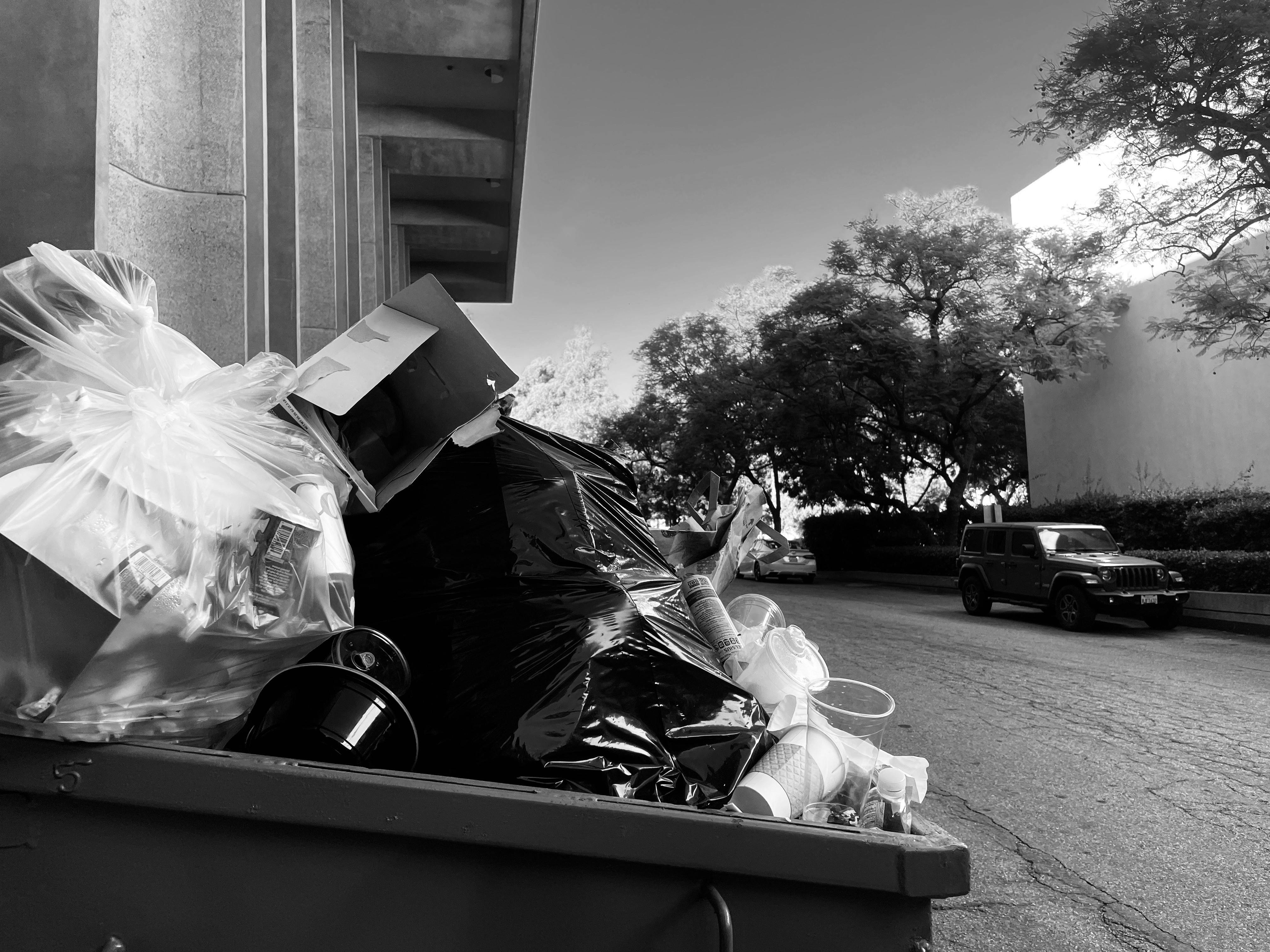Caltech orange needs a hint of green

Arriving at this institution from Denmark many tropes of the American, and indeed the Californian life seemed confirmed. Breakfasts of waffles, sweltering temperatures and affable attitudes.
However, there’s one aspect that has struck me more than any other - the complete disregard for environmental concerns.
From the very first day, the staggering amount of waste generated on this campus has been apparent. Every meal and drink of the day is served on single-use plastics, a practice strictly regulated in Europe. Enormous amounts of ‘swag’ being handed out, and a seemingly prevalent issue of food waste certainly made an impression. America is known for a culture of excess, but this was unexpected.
The campus Dining Services proudly features »Sustainability Initiatives« on their institute webpage, advertising the most unremarkable of amenities like »eco-friendly reusable utensils and plates that can be used again and again« at just one of their facilities as »Embracing Sustainability«.
While the enthusiasm for sustainability is commendable, one might expect that the Dining Services would take a more proactive approach to address one of the Western world’s big climate sins - excessive meat consumption. However, from anecdotal evidence, they seem to do the opposite, setting meat as the standard and regarding greener and more moral options as an afterthought.
Material waste is only one facet of the problem here at Caltech. With buildings air-conditioned to levels that require some Caltechians to bring sweaters to lectures, the norm of tumble-drying clothes in this dry Southern California climate and a seeming culture of leaving fume hoods open when not in use, energy consumption remains exorbitantly high – almost matching my home university while having an eighth of the population. A quick glance at the Caltech Sustainability Report reveals no sign of power consumption or emission reduction since the statistics began in the 20’s and ’90s.
While this Institution promotes their production of 100 percent of net electricity onsite, only a few percent of this is from renewables – even less than the already fossil-heavy California ISO grid. Even if Caltech improved on this, a basic understanding of additionality tells me that actual reductions in consumption is the only way to make a meaningful impact.
Don’t think that this excessive consumption only impacts the environment. With California having some of the priciest electricity in this nation, tuition is surely impacted. It too harms Caltech’s reputation; a point I suspect might resonate more with the administration than any other. In this year’s QS ranking – the first accounting for sustainability – Caltech dropped some ten spots falling from top 10 ranking for the first time ever. With all other top universities scoring above eighty, this institution barely hits forty. With a growing reputation for bad sustainability practices would it be unfair to imagine some of the important green research being made at the Institute would be harder to fund or lead to greenwashing-claims when promoted?
Looking at the big picture, in a country that lacks binding climate ambitions or emissions quota reductions, the impact of reductions from institutions like ours is unquestionably meaningful. Demonstrating significant reductions in emissions can set an example for other institutions, showcasing that deep reductions are achievable at prestigious and ambitious institutions.
As seen in many other universities, ambitious action-plans undoubtedly will lead some to fear that the outstanding research environment will be starved in marginal sustainability initiatives. I think this is overblown. Of course laboratories should do what they can to reduce unnecessary consumption and power usage, and faculty should consider if all conferences are worth flying to, but the truth is that when per capita emissions from comparable institutions like the MIT is almost half of here, something is amiss.